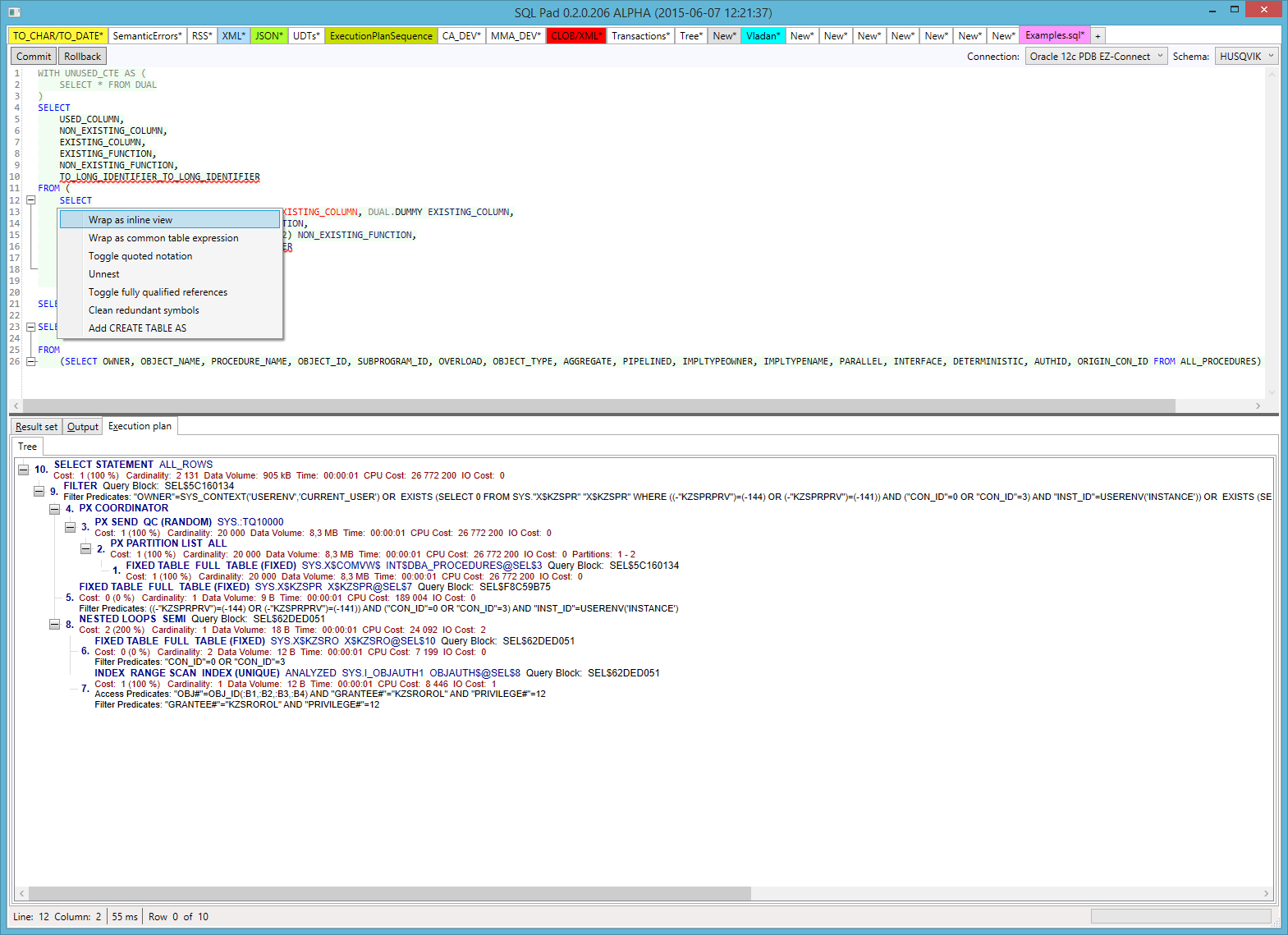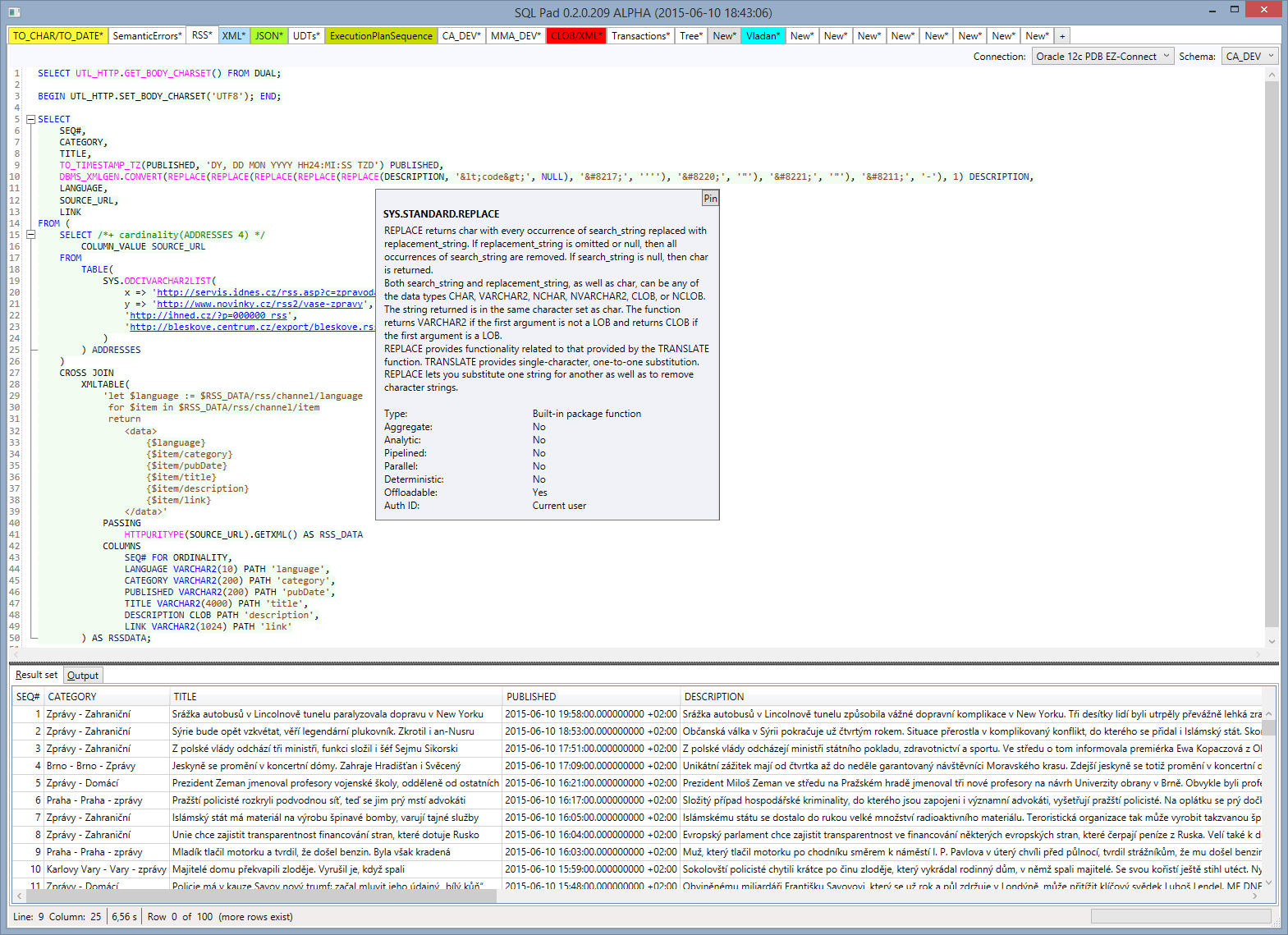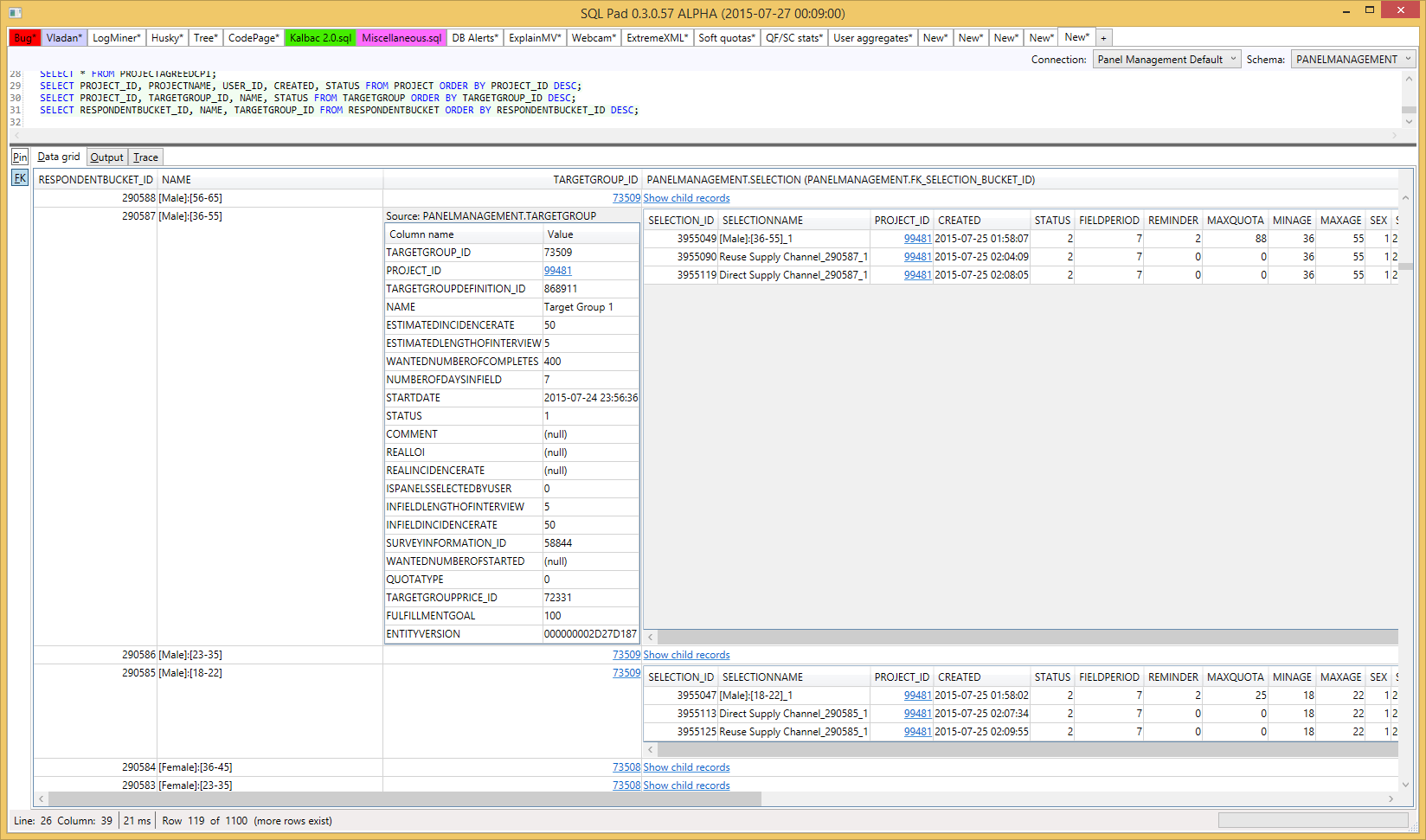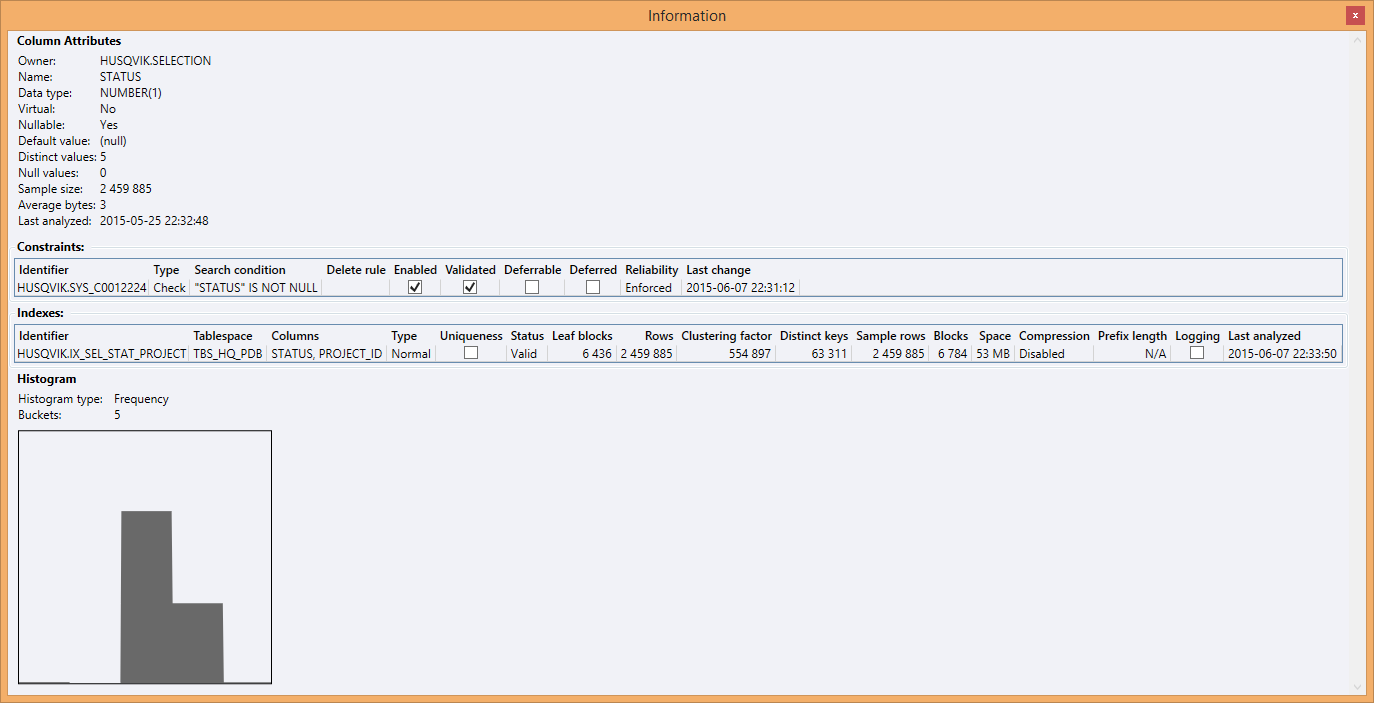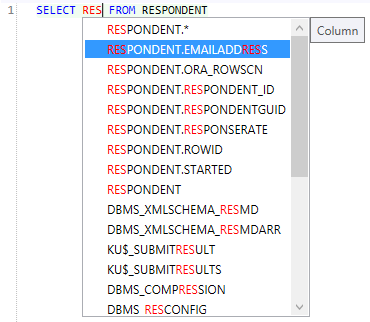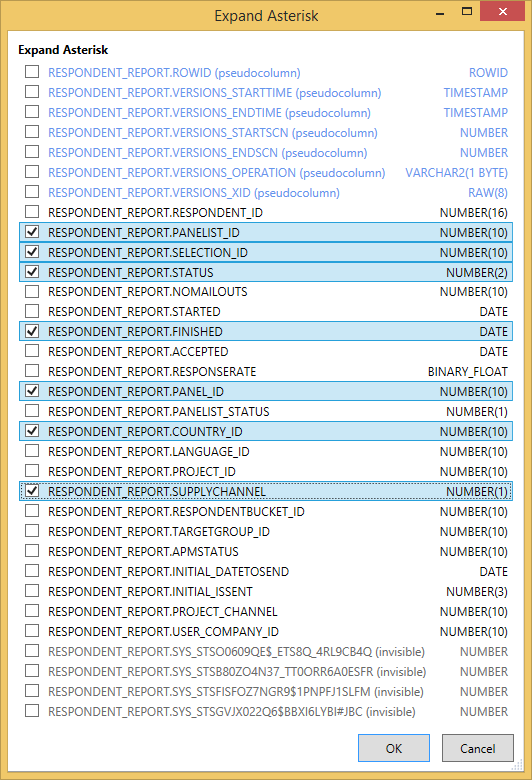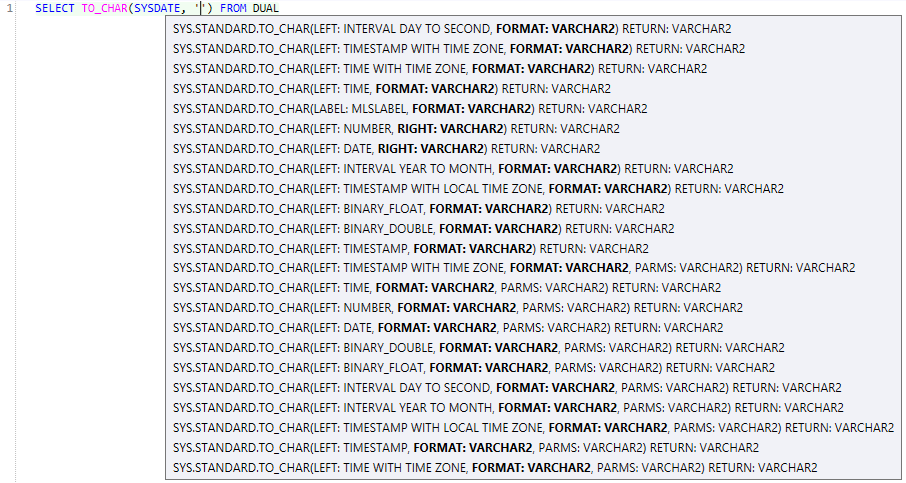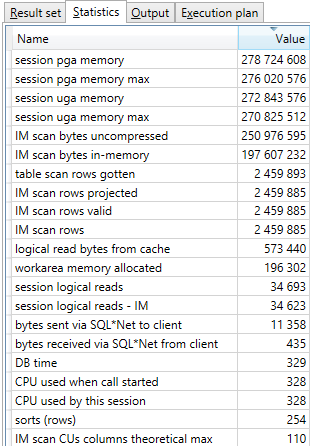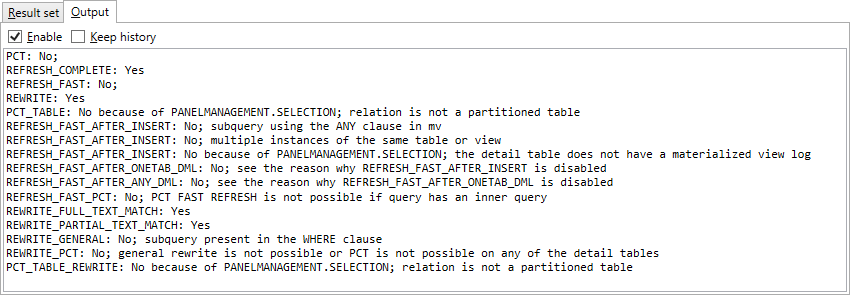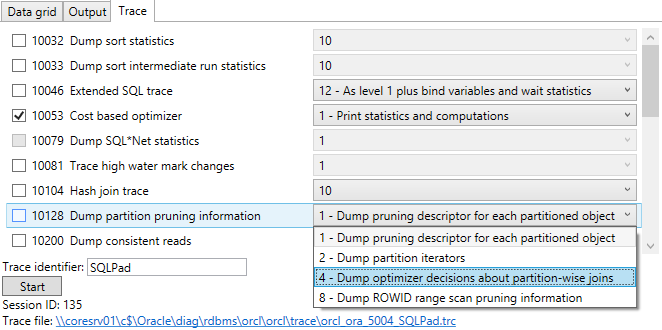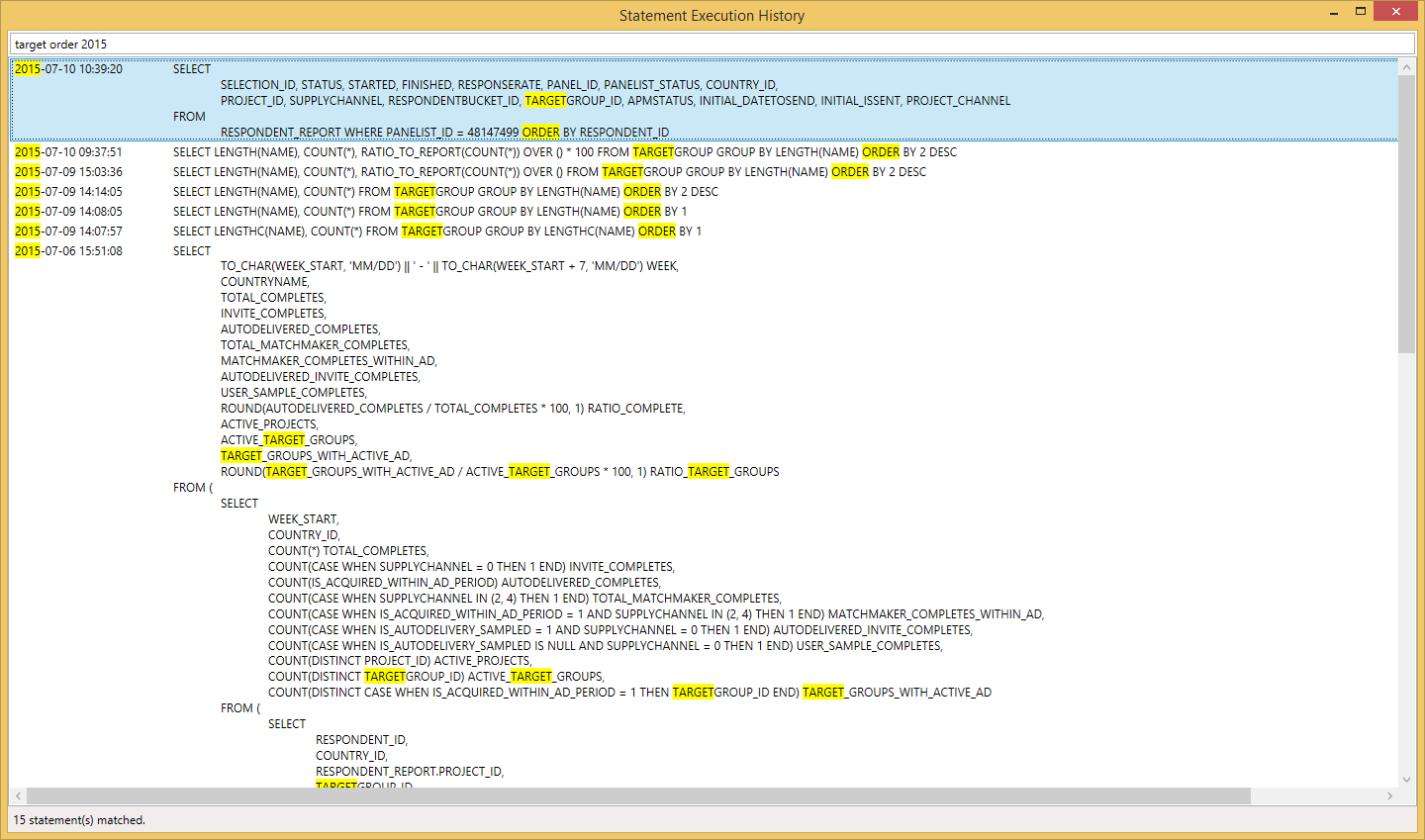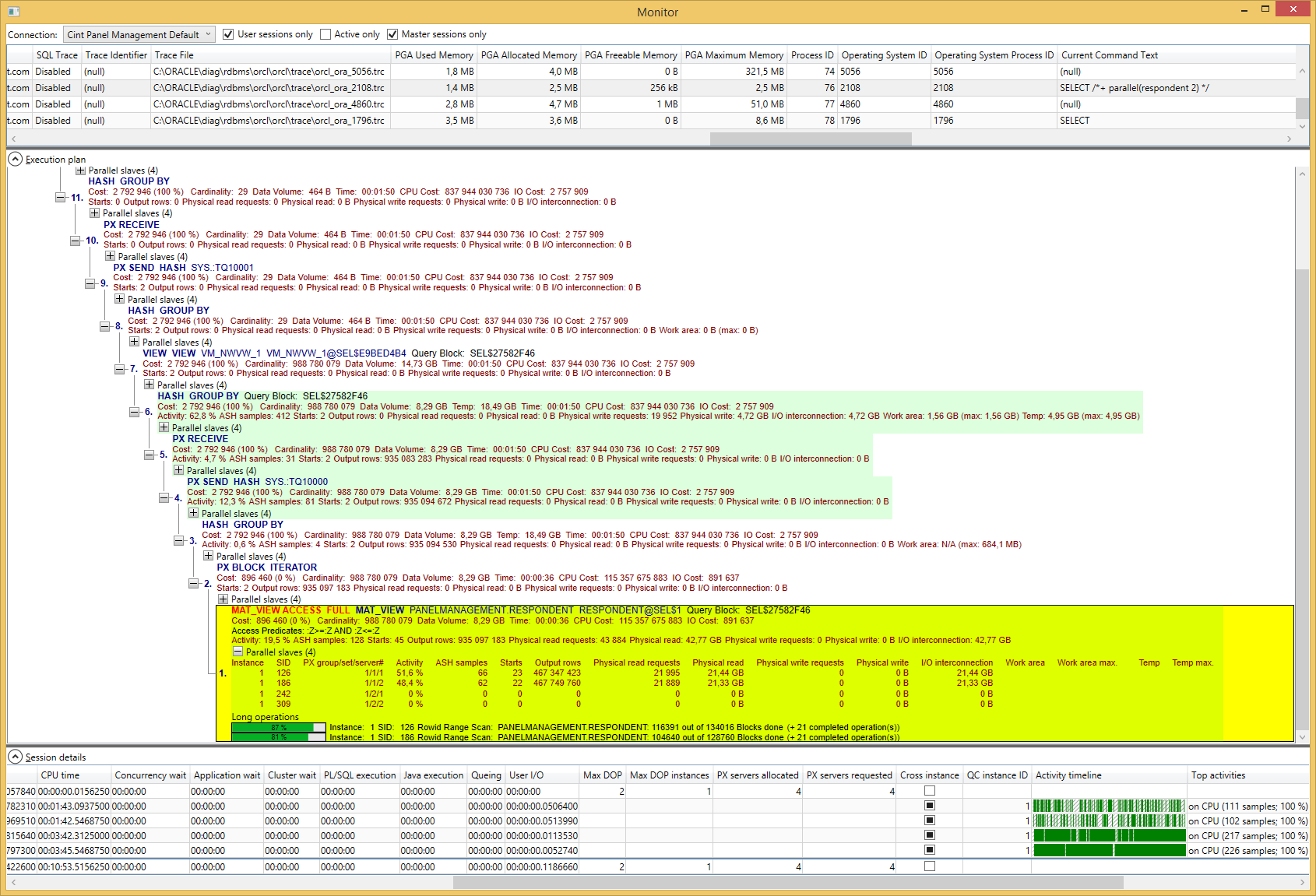| Builds | Oracle.DataAccess | Oracle.ManagedDataAccess |
|---|---|---|
| master | ||
| history |
SQLPad is an experimental SQL editor focused to quick and comfortable work. The primary reason for it was to find out why there are not any SQL editors with advanced features like programming IDEs with their intellisense and semantic analysis. To disprove it's not/hardly possible.
SQLPad is mainly inspired by ReSharper plugin to Visual Studio and LINQPad. Provides lightweight editor but aims at thorough semantic analysis and refactoring features. The main driving factor is to reduce dummy monkey work to minimum while focusing to results or analysis of a problem.
SQLPad provides:
- Smart code completion - schemas, objects, columns, functions, packages, sequences, types, etc;
- Semantic analysis - validating references to various database objects, immediately notifying about errors or problems;
- Fast overview over database object properties;
- Data export to various formats;
- Execution monitor.
SQLPad consists of a generic core application providing the user experience and a vendor specific module implementing the parser, analyzer, validator and other vendor specific components. As of now the only supported vendor is Oracle (11g, 12c).
Since the implementation is still very experimental there are tons of missing features. Primary focus of implementation are queries, then DML. There is also limited support of PL/SQL. But there is some DDL supported at least by grammar.
CTRL + Minus - Go to previous edit
CTRL + SHIFT + Minus - Go to next edit
CTRL + E - Explain plan
CTRL + Space - Invoke code completion (depends on caret position)
CTRL + SHIFT + Space - Show function overloads (only in function parameter list)
CTRL + D - Duplicate line/selection
CTRL + SHIFT + / - Block comment
CTRL + ALT + / - Line comment
ALT + Enter - Context actions (depends on caret position)
CTRL + ALT + PageUp - Navigate to previous highlight
CTRL + ALT + PageDown - Navigate to next highlight
SHIFT + ALT + PageUp - Navigate to previous error
SHIFT + ALT + PageDown - Navigate to next error
CTRL + ALT + Home - Navigate to query block root (related SELECT keyword)
F12 - Navigate to definition, e. g., when column is propagated via multiple inline views
CTRL + Enter - Execute command (hold SHIFT to gather execution statistics)
F9 - Execute command (hold SHIFT to gather execution statistics)
CTRL + D - Duplicate line/selection
CTRL + S - Save current document
CTRL + SHIFT + S - Save all open documents
CTRL + Comma - Show recent documents
CTRL + ALT + F - Format statement
SHIFT + ALT + F - Format statement into single line
CTRL + SHIFT + F - Statement normalization
SHIFT + ALT + F11 - Find usages (column/object identifiers/aliases, functions, bind variables, literals)
ESC - Cancel executing command
F5 - Refresh database metadata
CTRL + T - Creates new document
CTRL + F4 - Closes current document
CTRL + ALT + SHIFT + Up - Move content up - select column, group by/order by expression
CTRL + ALT + SHIFT + Down - Move content down - select column, group by/order by expression
ALT + Delete - Safe delete (column or object alias)
CTRL + SHIFT + U - Set text to upper case
CTRL + U - Set text to lower case
CTRL + SHIFT + Comma - Decrease editor font size
CTRL + SHIFT + Period - Increase editor font size
ALT + INSERT - Code generation items
F1 - Show documentation (built-in SQL functions and package functions, statements, data dictionary objects)
CTRL + ALT + H - Show execution history
SHIFT + F6 - Rename symbol
CTRL + SHIFT + V - Clipboard history
CTRL + ALT + M - Database monitor
Add CREATE TABLE AS
Clean redundant symbols
Toggle quoted notation
Toggle fully qualified references
Unnest inline view
Unquote - makes all query block columns case insensitive
Wrap current query block as common table expression
Wrap current query block as inline view
Add missing column
Add to GROUP BY
Add to ORDER BY
Clean redundant symbols
Create script
Expand view
Propagate column
Resolve ambiguous column
Wrap current query block as inline view
Add named parameters
Extract PL/SQL package interface
Add alias
Create script
Convert ORDER BY number column reference
Convert to literal
Convert to bind variable
Split string
Expand asterisk (hold SHIFT to select specific column)
Add columns (hold SHIFT to select specific column)
Wrap current query block as inline view
Convert ORDER BY number column reference
Microsoft .NET 4.6
Oracle Data Access Components 12c - 32 bit - unmanaged driver preferred (due to certain limitations of managed driver, e. g., lack of XML and UDT types support)
Connection string must be Oracle ADO.NET compliant, see http://www.oracle.com/technetwork/topics/dotnet/install121024-2704210.html. Managed driver might require additional configuration, see https://docs.oracle.com/html/E41125_02/featConfig.htm#BABEGGHD;
<connectionStrings>
<clear/>
<add name="Connection name 1" providerName="Oracle.DataAccess.Client" connectionString="DATA SOURCE=TNS_name;PASSWORD=password1;USER ID=user_name1" />
<add name="Connection name 2" providerName="Oracle.DataAccess.Client" connectionString="DATA SOURCE=host:1521/service_name;PASSWORD=password2;USER ID=user_name2" />
<!-- other connection strings -->
</connectionStrings>Each connection string requires an infrastructure factory configuration record:
<databaseConnectionConfiguration>
<infrastructureConfigurations>
<infrastructure ConnectionStringName="Connection name 1" InfrastructureFactory="SqlPad.Oracle.OracleInfrastructureFactory, SqlPad.Oracle" />
<infrastructure ConnectionStringName="Connection name 2" InfrastructureFactory="SqlPad.Oracle.OracleInfrastructureFactory, SqlPad.Oracle" IsProduction="true" />
<!-- other connection configurations -->
</infrastructureConfigurations>
</databaseConnectionConfiguration>IsProduction - indicates connection to a production system using red label
<Configuration xmlns="http://husqvik.com/SqlPad/2014/02">
<DataModel DataModelRefreshPeriod="60" />
<ResultGrid DateFormat="yyyy-MM-dd HH:mm:ss" NullPlaceholder="(null)" FetchRowsBatchSize="500" />
<Editor IndentationSize="2" />
</Configuration>DataModelRefreshPeriod - data dictionary refresh period in minutes; refresh can forced any time using F5
DateFormat - data grid date time format (.NET format)
NullPlaceholder - data grid NULL value representation (default '(null)')
FetchRowsBatchSize - number of rows fetched in one batch (default 100)
IndentationSize - number of spaces for tab indentation (default 4)
<OracleConfiguration xmlns="http://husqvik.com/SqlPad/2014/08/Oracle">
<StartupScript>
-- Enter optional global script to execute when database connection is established.
</StartupScript>
<TKProfPath>c:\Oracle\product\12.1.0\dbhome_1\BIN\tkprof.exe</TKProfPath>
<Connections>
<Connection ConnectionName="Oracle 12c PDB EZ-Connect" RemoteTraceDirectory="c:\Oracle\diag\rdbms\hq12c\hq12c\trace\">
<StartupScript>
-- Enter optional script to execute when database connection is established.
</StartupScript>
<ExecutionPlan>
<TargetTable Name="EXPLAIN_PLAN" />
</ExecutionPlan>
</Connection>
</Connections>
<Formatter>
<FormatOptions Identifier="Lower" Alias="Lower" Keyword="Upper" ReservedWord="Upper" />
</Formatter>
</OracleConfiguration>StartupScript - optional initialization script executed when connection to database is established
RemoteTraceDirectory - optional remote database trace directory; enables access to remote trace files from SQL Pad
TKProfPath - optional path to TKProf.exe; enables transient kernel profile output for extended SQL trace (10046) files.
ExecutionPlan/TargetTable - table name used for EXPLAIN PLAN function; table is not created automatically and must be created manually using script:
CREATE GLOBAL TEMPORARY TABLE EXPLAIN_PLAN
(
STATEMENT_ID VARCHAR2(30),
PLAN_ID NUMBER,
TIMESTAMP DATE,
REMARKS VARCHAR2(4000),
OPERATION VARCHAR2(30),
OPTIONS VARCHAR2(255),
OBJECT_NODE VARCHAR2(128),
OBJECT_OWNER VARCHAR2(30),
OBJECT_NAME VARCHAR2(30),
OBJECT_ALIAS VARCHAR2(65),
OBJECT_INSTANCE INTEGER,
OBJECT_TYPE VARCHAR2(30),
OPTIMIZER VARCHAR2(255),
SEARCH_COLUMNS NUMBER,
ID INTEGER,
PARENT_ID INTEGER,
DEPTH INTEGER,
POSITION INTEGER,
COST INTEGER,
CARDINALITY INTEGER,
BYTES INTEGER,
OTHER_TAG VARCHAR2(255),
PARTITION_START VARCHAR2(255),
PARTITION_STOP VARCHAR2(255),
PARTITION_ID INTEGER,
OTHER LONG,
DISTRIBUTION VARCHAR2(30),
CPU_COST INTEGER,
IO_COST INTEGER,
TEMP_SPACE INTEGER,
ACCESS_PREDICATES VARCHAR2(4000),
FILTER_PREDICATES VARCHAR2(4000),
PROJECTION VARCHAR2(4000),
TIME INTEGER,
QBLOCK_NAME VARCHAR2(30),
OTHER_XML CLOB
)
ON COMMIT PRESERVE ROWS;
CREATE OR REPLACE PUBLIC SYNONYM EXPLAIN_PLAN FOR EXPLAIN_PLAN;ANYDATA data type not supported because Oracle Data Access does not support it. Possible use of Devart Oracle provider.
Support for user defined types (UDT) is very cumbersome (and not enabled by default) due to Oracle Data Access implementation. Devart Oracle provider also solves this.

